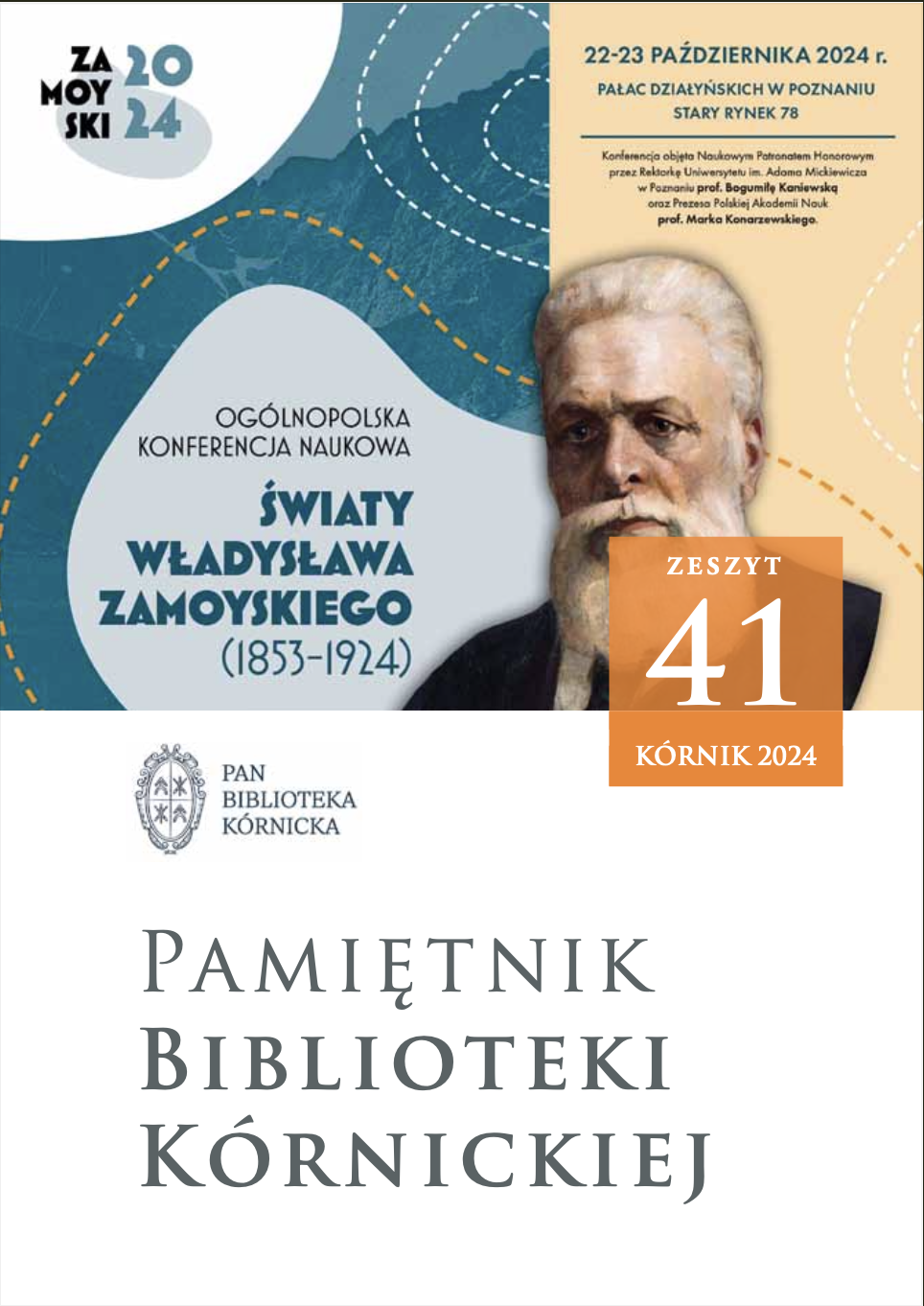Maria Magdalena z Biblioteki Kórnickiej
Mary Magdalene from the Kórnik Library
Author(s): Tadeusz J. ŻuchowskiSubject(s): Architecture, Visual Arts, History of Art
Published by: Biblioteka Kórnicka PAN
Keywords: Mary Magdalene; Descent from the Cross; Rogier van der Weyden; Master of Frankfurt; early Netherlandish painting;
Summary/Abstract: Since 1951, the collection of the Polish Academy of Sciences Kórnik Library includes a small oil painting on oak board. The work came to Kórnik from the Poznanianka pension in Przesieka (before 1945, Hain im Riesengebirge). It depicts Mary Magdalene and is undoubtedly a fragment of a larger retable composition. The painting has not been the subject of research so far. Before 1939, the painting was probably owned by a Silesian collector, and it arrived in Przesieka along with other works of art robbed or ‘secured’ by the Germans during WWII.My opinion is that the work was created between 1510 and 1520, and the overall composition was based on a variant known from a drawing in the Louvre, attributed to the workshop of Rogier van der Weyden. The Mary Magdalene figure itself is a repetition of the famous painting by the same artist from the Prado Museum in Madrid. It was a compositional proposal that was extremely well received not only in painting, but also in sculpture, and was reproduced in numerous works until the 17th century. The most striking resemblances to the Mary Magdalene figure from Kórnik can be found in the four paintings depicting the same saint in the scene 'Descent from the Cross', which are preserved at the J. Paul Getty Museum in Los Angeles (Ca), in the Church of Our Lady of the Assumption in Watervliet (Belgium), at the Spencer Museum of Art in Lawrence (Ks) and at the Museo di Capodimonte in Naples. They are associated with the Master of Frankfurt or with his workshop. The compositions of these paintings are also influenced by a drawing from the Louvre. The key analogies between the Kórnik painting and the figure of Mary Magdalene in these paintings are: the rich brocade gown with neckline, the technique used to paint kirtle sleeves, the way to work out the hair sticking out from under the kerchief bound in turban, and the intricate arrangement of the fingers of the joined hands. These similarities indicate that the author of the painting from the Kórnik Library should be sought within the widely understood circle of the Master of Frankfurt. The brocade patterns on the Kórnik picture are the closest to those on the paintings at the Getty Museum, Spencer Museum and Museo di Capodimonte. Furthermore, the type of presentation of the exposed neckline in the Kórnik painting bears a striking resemblance to the painting from the Getty Museum. The hair strands that extend from the kerchief are also the closest to the Getty Museum painting. Meanwhile, a barely visible figure, seen only fragmentarily in the background, is holding three nails similar to the one on the retable from Watervliet. The Kórnik picture also contains solutions and elements that do not appear in any of these works. They include: improper proportions of the torso and arms, an abnormal head position, the belt in type demi-ceint de magnanimité, and bits of vegetation on the left side. The loosely falling belt is arranged similarly to the original painting from Madrid. The way in which the vegetation was painted shows certain analogies to the picture from the Museo di Capodimonte, but also to works from the circle of Gerard David and painters active around the mid-15th century.
Journal: Pamiętnik Biblioteki Kórnickiej
- Issue Year: 2024
- Issue No: 41
- Page Range: 175-198
- Page Count: 24
- Language: Polish

